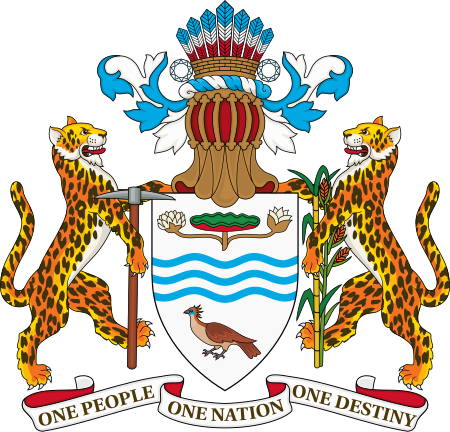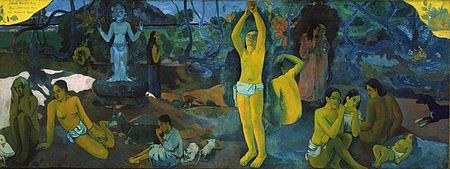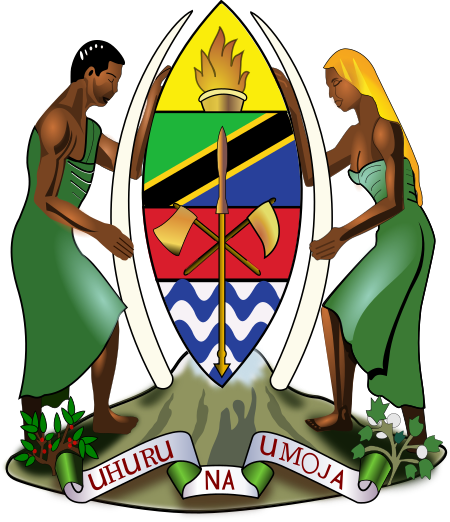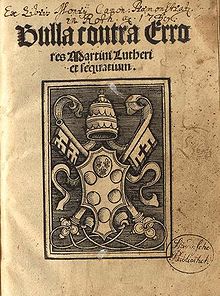Papal bull
|
Read other articles:

Pour les articles homonymes, voir Attention (homonymie). Lituanie Attention Vilija Matačiūnaitė lors de la première répétition générale de la seconde demi-finale du Concours Eurovision de la chanson 2014. Chanson de Vilija Matačiūnaitė auConcours Eurovision de la chanson 2014extrait de l'album Attention Sortie 2014 Durée 2:52 Langue Anglais Genre Pop Auteur Vilija Matačiūnaitė Compositeur Vilija Matačiūnaitė, Viktoras Vaupšas Classement Première demi-finale : …

Régions du Guyana, 2010 Armoiries du Guyana L'histoire du Guyana commence avec les premiers peuplements du territoire par des peuples amérindiens, notamment les Arawaks et les Kali'nas. En 1499, la première expédition du conquistador Alonso de Ojeda arrive d'Espagne au fleuve Essequibo. L'histoire du Guyana a été façonnée par de nombreux groupes ethniques et plusieurs puissances coloniales, notamment les Espagnols, les Français, les Néerlandais et les Britanniques. Les rébellions d'es…

Artikel ini bukan mengenai Tukang Bubur Pengen Naik Haji. Tukang Bubur Naik Haji the SeriesGenre Drama Komedi Religi SkenarioImam TantowiCeritaImam TantowiSutradaraH Ucik SupraPemeran Mat Solar Uci Bing Slamet Nani Wijaya Citra Kirana Andi Arsyil Penggubah lagu temaOpickLagu pembukaHaji oleh OpickLagu penutupHaji oleh OpickNegara asalIndonesiaBahasa asliBahasa IndonesiaJmlh. musim1Jmlh. episode2185ProduksiProduser eksekutifElly Yanti NoorProduserLeo SutantoPengaturan kameraMulti-kameraDurasi60�…

此條目可参照英語維基百科相應條目来扩充。 (2021年5月6日)若您熟悉来源语言和主题,请协助参考外语维基百科扩充条目。请勿直接提交机械翻译,也不要翻译不可靠、低品质内容。依版权协议,译文需在编辑摘要注明来源,或于讨论页顶部标记{{Translated page}}标签。 约翰斯顿环礁Kalama Atoll 美國本土外小島嶼 Johnston Atoll 旗幟颂歌:《星條旗》The Star-Spangled Banner約翰斯頓環礁地�…

Voce principale: Hamburger Sport-Verein. Hamburger Sport-VereinStagione 1980-1981Sport calcio Squadra Amburgo Allenatore Branko Zebec (1ª-17ª) Aleksandar Ristić (18ª-34ª) Bundesliga2º posto Coppa di GermaniaQuarti di finale Coppa UEFAOttavi di finale Maggiori presenzeCampionato: Kaltz, Groh (34)Totale: Kaltz, Groh (45) Miglior marcatoreCampionato: Hrubesch (17)Totale: Hrubesch (31) StadioVolksparkstadion Maggior numero di spettatori61 648 vs. Bayern Monaco Minor numero di spettat…

American college basketball season 2007–08 North Carolina Tar Heels men's basketballACC Tournament ChampionsACC Regular Season ChampionsNCAA tournament, Final FourConferenceAtlantic Coast ConferenceRankingCoachesNo. 3APNo. 1Record36–3 (14–2 ACC)Head coachRoy Williams (5th season)Assistant coaches Joe Holladay Steve Robinson Jerod Haase Home arenaDean Smith CenterSeasons← 2006–072008–09 → 2007–08 ACC men's basketball standings vte Conf Overall…

Scholar of Islam, papyrologist and paleographer Nabia AbbottNabia Abbott at the Oriental InstituteBornNabia Abbott(1897-01-31)31 January 1897Mardin, Ottoman EmpireDied15 October 1981(1981-10-15) (aged 84)ChicagoAcademic backgroundEducationIsabella Thoburn CollegeBoston University (M.A.)University of Chicago (PhD)ThesisThe Kurrah Papyri of the Oriental Institute (1936)Doctoral advisorMartin SprenglingAcademic workDisciplineIslamic StudiesSub-disciplinePapyrologyPhilologyInstitutionsUniversit…

Nikolaus Harnoncourt Nikolaus Harnoncourt nome completo Johann Nicolaus Graf[1] de la Fontaine und d'Harnoncourt-Unverzagt (Berlino, 6 dicembre 1929 – Sankt Georgen im Attergau, 5 marzo 2016) è stato un direttore d'orchestra, violoncellista, gambista e musicologo austriaco, molto noto per le sue esecuzioni accurate dal punto di vista della pratica esecutiva storica della musica dell'epoca classica e precedente. Indice 1 Biografia 2 CD 3 DVD & BLU-RAY 4 Premi 5 Onorificenze 6 Note …

Artikel ini perlu diwikifikasi agar memenuhi standar kualitas Wikipedia. Anda dapat memberikan bantuan berupa penambahan pranala dalam, atau dengan merapikan tata letak dari artikel ini. Untuk keterangan lebih lanjut, klik [tampil] di bagian kanan. Mengganti markah HTML dengan markah wiki bila dimungkinkan. Tambahkan pranala wiki. Bila dirasa perlu, buatlah pautan ke artikel wiki lainnya dengan cara menambahkan [[ dan ]] pada kata yang bersangkutan (lihat WP:LINK untuk keterangan lebih lanjut). …

Частина серії проФілософіяLeft to right: Plato, Kant, Nietzsche, Buddha, Confucius, AverroesПлатонКантНіцшеБуддаКонфуційАверроес Філософи Епістемологи Естетики Етики Логіки Метафізики Соціально-політичні філософи Традиції Аналітична Арістотелівська Африканська Близькосхідна іранська Буддійсь…

Частина серії проФілософіяLeft to right: Plato, Kant, Nietzsche, Buddha, Confucius, AverroesПлатонКантНіцшеБуддаКонфуційАверроес Філософи Епістемологи Естетики Етики Логіки Метафізики Соціально-політичні філософи Традиції Аналітична Арістотелівська Африканська Близькосхідна іранська Буддійсь…

ابن المنذر النيسابوري معلومات شخصية الميلاد 241 هـ في نيسابورنيسابور الوفاة 318 هـ في مكةمكة المكرمة الإقامة مسلم مواطنة إيران المذهب الفقهي الشافعية العقيدة أهل السنة الحياة العملية الحقبة 241 هـ - 318 هـ المهنة عالم، ومفسر اللغات العربية مجال العمل الفقه ال�…

Bilateral relationsTanzanian – Zambian relations Tanzania Zambia Tanzania– Zambia relations are bilateral relations between Tanzania and Zambia. Tanzania and Zambia are one of the oldest allies in the region and together formed the front line nations for independence for neighboring African nations. Both nations are part of the Southern African Development Community, African Union and Non-Aligned Movement. Trade and economy The balance of trade between the two nations is very stable and in 2…

Canadian politician (born 1981) The HonourableTerry BeechPC MPBeech in 2019Minister of Citizens ServicesIncumbentAssumed office July 26, 2023Prime MinisterJustin TrudeauPreceded byPosition establishedParliamentary Secretary to the Deputy Prime Minister and Minister of FinanceIn officeDecember 3, 2021 – July 26, 2023MinisterChrystia FreelandPreceded bySean FraserSucceeded byTBDParliamentary Secretary to the Minister of Fisheries, Oceans, and the Canadian Coast GuardIn officeDec…

1975 short story collection by Harlan Ellison Deathbird Stories First edition coverAuthorHarlan EllisonIllustratorLeo and Diane DillonCountryUnited StatesLanguageEnglishGenreSpeculative fictionPublisherHarper & RowPublication date1975Media typePrint (hardback)Pages334 (first edition, hardback)ISBN0-06-011176-3 (first edition, hardback)OCLC1102861Dewey Decimal813/.5/4LC ClassPZ4.E4695 De3 PS3555.L62 Deathbird Stories: A Pantheon of Modern Gods is a 1975 collection of short stories b…

Legendary Spartan warrior For the character in the Iliad who had the patronymic Othryades, see Panthous. OthryadesOthryades depicted in an 1810 sculptureNative nameὈθρυάδης and ὈθρυάδαςAllegianceSpartaBattles/warsBattle of the 300 Champions Othryades (Ancient Greek: Ὀθρυάδης) and Othryadas (Ancient Greek: Ὀθρυάδας)[1] was the last surviving Spartan of the 300 Spartans selected to fight against 300 Argives in the Battle of the 300 Champions. Ashamed by …

Sri Lankan Mahela Jayawardene holds the record for the most runs for the Asian XI A One Day International, or an ODI, is an international cricket match between two representative teams, each having ODI status, as determined by the International Cricket Council. An ODI differs from Test matches in that the number of overs per team is limited, and that each team has only one innings. The ACC Asian XI was a team named for the 2005 World Cricket Tsunami Appeal, a one-off match designed to raise fund…

County in Illinois, United States County in IllinoisEdgar CountyCountyEdgar County CourthouseLocation within the U.S. state of IllinoisIllinois's location within the U.S.Coordinates: 39°41′N 87°45′W / 39.68°N 87.75°W / 39.68; -87.75Country United StatesState IllinoisFoundedJanuary 3, 1823Named forJohn EdgarSeatParisLargest cityParisArea • Total624 sq mi (1,620 km2) • Land623 sq mi (1,610 km2) •…

لمعانٍ أخرى، طالع الغضب (توضيح). الغضب (رواية)معلومات عامةالمؤلف ستيفن كينغ اللغة الإنجليزية العنوان الأصلي Rage (بالإنجليزية) البلد الولايات المتحدة النوع الأدبي إثارة نفسيةرواية قصيرةرواية إثارة الناشر المكتبة الأمريكية الجديدة تاريخ الإصدار 13 سبتمبر 1977 التقديم�…

App Installerالشعارمعلومات عامةنوع مُثبت (تثبيت)نظام التشغيل ويندوز 10المطورون مايكروسوفتتعديل - تعديل مصدري - تعديل ويكي بيانات مُثبت التَطبيقات (بالإنجليزية: App Installer) هو أحد مكونات برنامج ويندوز 10، الذي تَمَّ تقديمه في الذكرى السنوية للنظام عام 2016، ويُستخدم لتثبيت وصيانة التط�…




